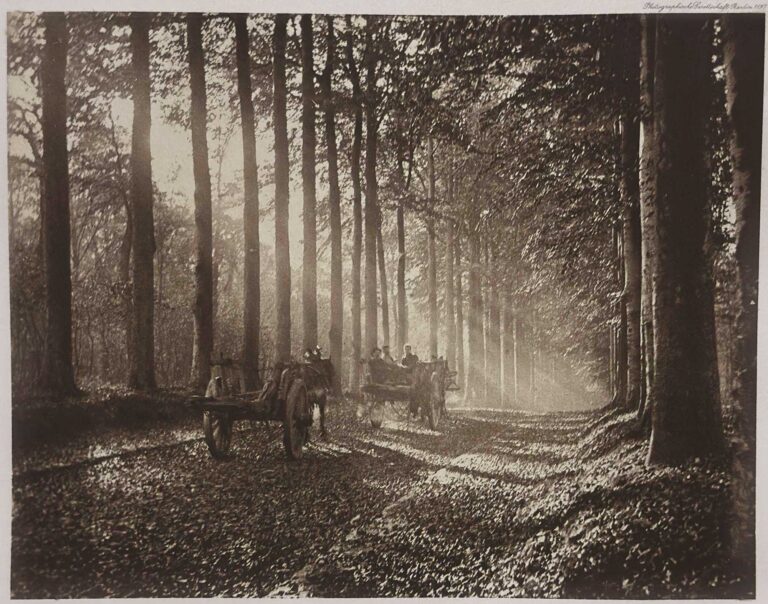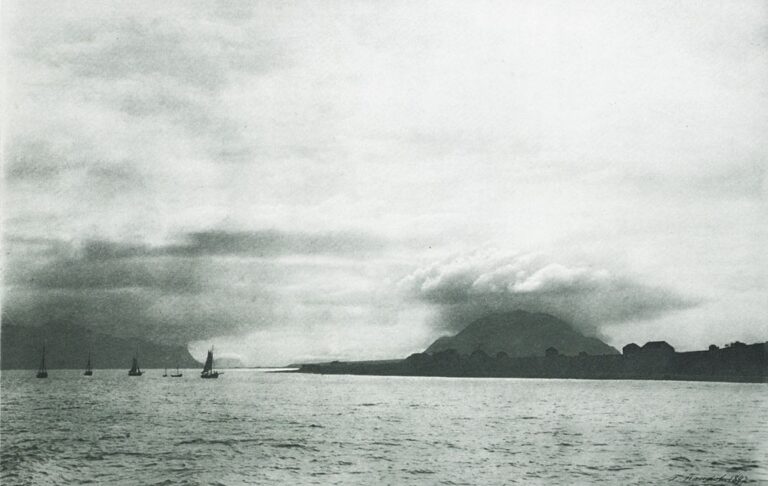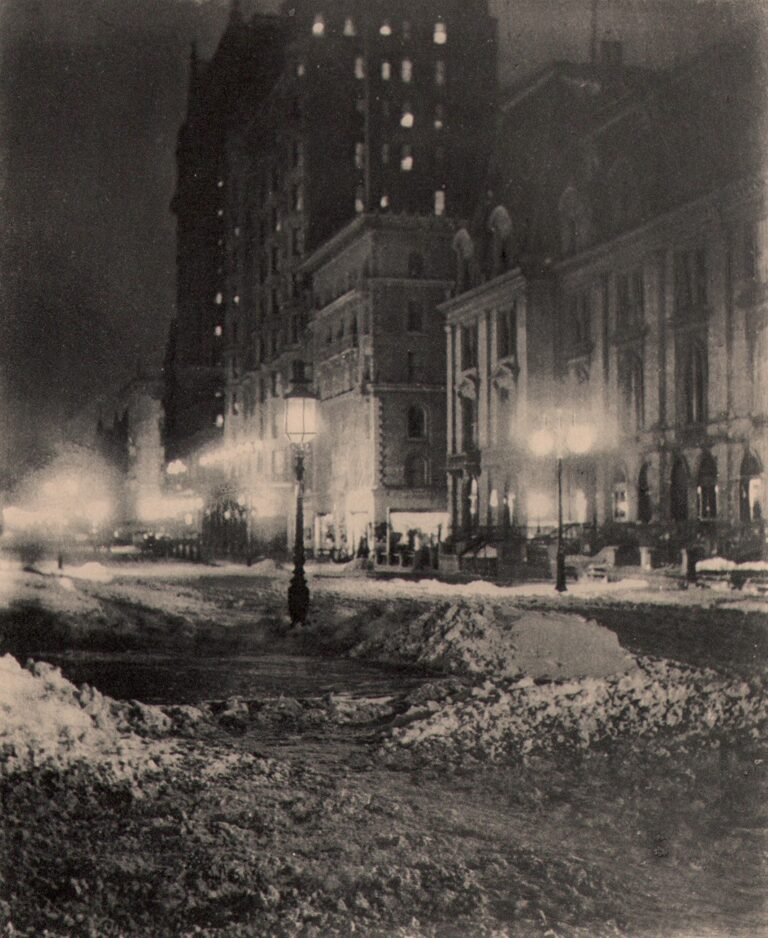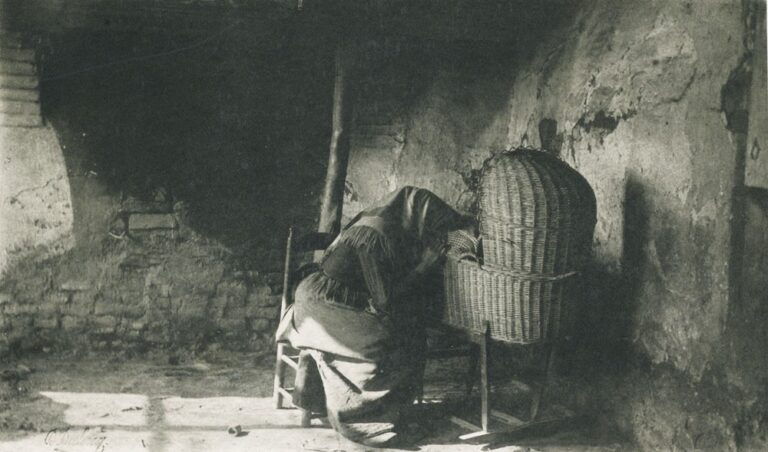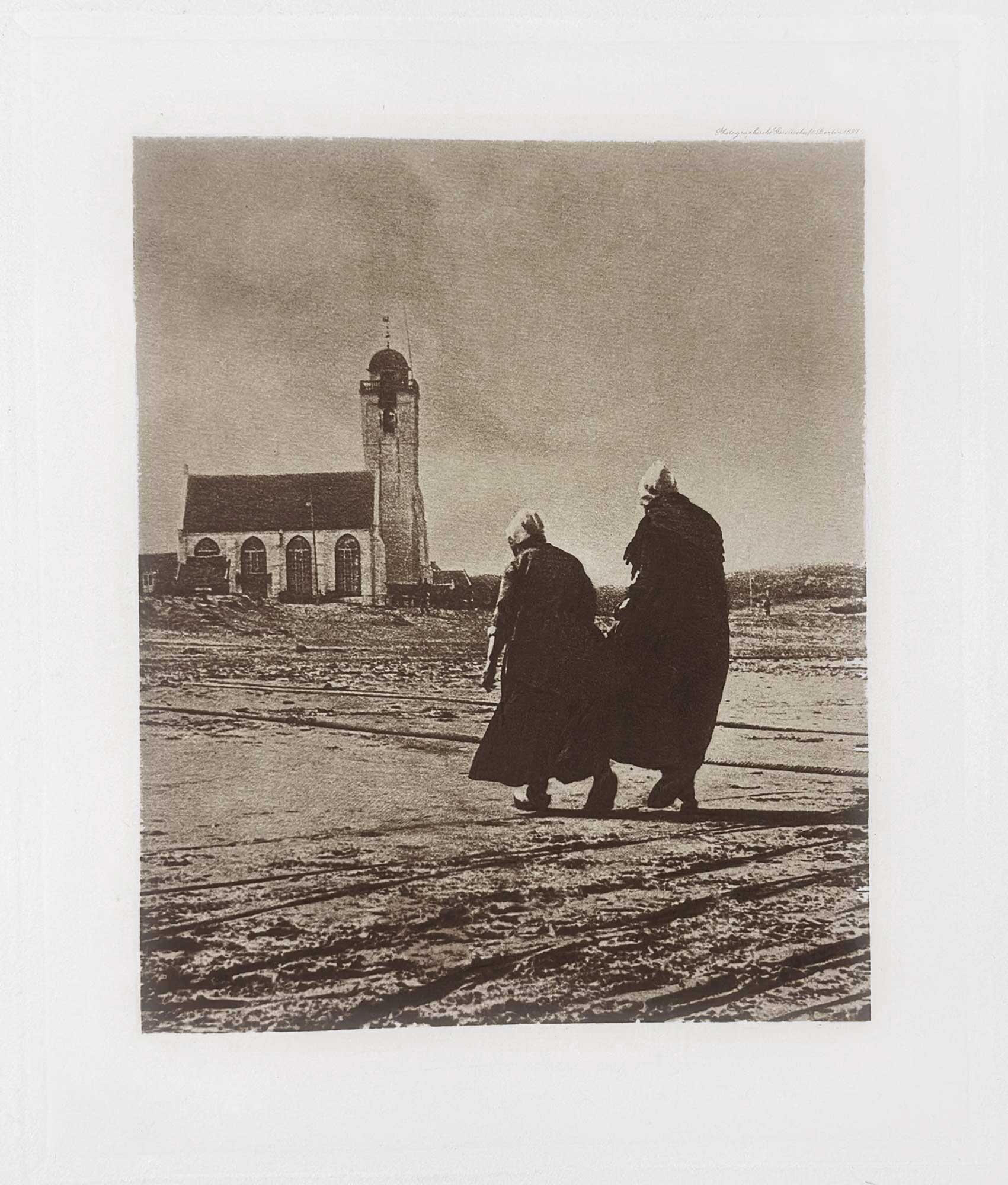
Nach Hause | Home
Dutch fishwives head for home on the beach at Katwyk, in South Holland. Best known with the title Scurrying Home, its alternate title is Hour of Prayer, the implication being they were heading to their daily ritual of the sanctuary of the church-seen in the background of the photograph.
Well exhibited in its day and one that brought many honors to the artist, this was an early effort by Alfred Stieglitz, taken in 1894. The National Gallery of Art in Washington, D.C., which holds original prints of Scurrying home-part of the “Key Set”, gives background in the words of the artist and his then future brother-in-law and business partner Louis H. Schubart regarding the hardy people of Katwyk:
Shortly after his 1894 trip to Europe, Stieglitz wrote of his experience photographing Katwijk aan Zee: “An hour distant from Amsterdam, the spires of the Casino at Scheveningen within sight, yet as far off as if hundreds of miles separated Katwyk from the capital city of Holland and its most famous watering place. As Gutach lives off its land Katwyk lives off the ocean. Fishermen and their boats, and the houses built to resist rude storms, are the themes here on which artists frame their poems, and the people are like the phase of nature that surrounds them. Immense in stature, hardy, brave beyond belief, stoical from long habit, seeing brother, father, son and husband leave on their perilous fishing trips far out in the North Sea, not knowing when or whether at all they will return, welcoming them with a simple handshake, no embrace, no tender kiss for the returning hero for hero he is”. (1.)
And weighing in with some contemporary criticism, art critic Sadakichi Hartmann commented on Scurrying Home:
“Scurrying Home” could teach many an artist what composition means. It is more simple and direct than the previous picture. Two Dutch women crossing an open waste of sand, with the Katwyk Church, made famous by modern painters, in the distance. How interesting the texture of the foreground! How well its oblique lines cut those of the middle distance! How well the distance is managed! And how marvelously the figures are placed, considering that if they had been photographed one second sooner or later the picture would have been spoiled. Their movement is as natural as it can be; it suggests the breeziness of the weather; only the feet of the larger one are somewhat indistinct, and the skirts of both are too opaque. It seems almost impossible in photography to attain Whistleresque subtleties of tone in a dark object.
“Scurrying Home” is a landmark in the domain of camera art and worth alone a trip to Europe. Many an artist after a three years* sojourn abroad returns without being able to show half as much. “Scurrying Home” shows better than any other American photograph I know the possibilities of artistic photography. (2.)
- “Two Artists’ Haunts,” Alfred Stieglitz, with Louis H. Schubart: The Photographic Times 26, January, 1895, p. 11.
-
Alfred Stieglitz: An Art Critic’s Estimate: Sadakichi Hartmann: republished in The Valiant Knights of Daguerre – Selected Critical Essays on Photography and Profiles of Photographic Pioneers, pp. 163-64.
